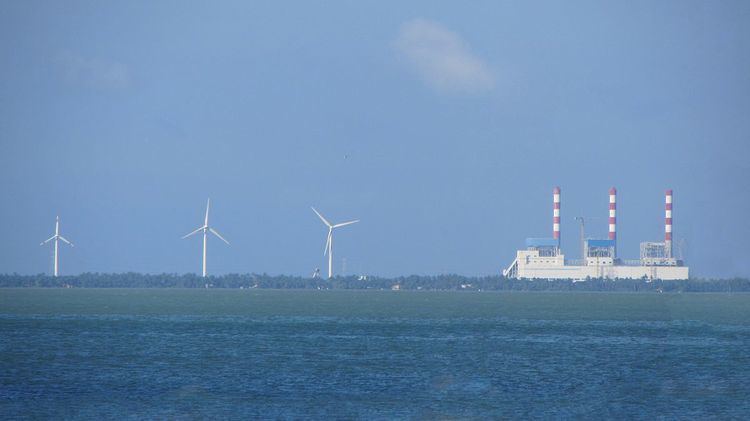Status Operational Primary fuel Coal Construction cost 1.35 billion USD | Commission date 22 March 2011 Phone +94 32 2 268978 Construction began 11 May 2006 | |
 | ||
Address Lakvijaya Power Station, Norochcholai, Sri Lanka Hours Open today · Open 24 hoursSundayOpen 24 hoursMondayOpen 24 hoursTuesdayOpen 24 hoursWednesdayOpen 24 hoursThursdayOpen 24 hoursFridayOpen 24 hoursSaturdayOpen 24 hours Similar Sampur Power Station, Yugadanavi Power Station, Laxapana Dam, Upper Kotmale Dam, Sapugaskanda Power Station | ||
China president is lakvijaya power station opening
The Lakvijaya Power Station (also known as the Norocholai Power Station, after its location) is the largest power station in Sri Lanka. The power station is in Norocholai, Puttalam, on the southern end of the Kalpitiya Peninsula. Construction of the facility began on 11 May 2006, with the first unit commissioning on 22 March 2011. The first 300-megawatt phase was completed and ceremonially commissioned by President Mahinda Rajapaksa on 22 March 2011 at 18:27 local time, with the presence of Minister of Energy Champika Ranawaka, deputy Minister of Energy Premalal Jayasekara. The former minister of Energy John Seneviratne could not attend as he was injured in a traffic accident on the way to the ceremony.
Contents
According to the Ceylon Electricity Board, the US$455 million first phase generates nearly 1.7 TWh of electricity annually — a significant amount when compared to Sri Lanka's total production of 11.5 TWh in 2011. The plant is connected to the grid via 115 km (71 mi) 220-kilovolt transmission line to Veyangoda. Power station exhausts are emitted through a 150 m (492 ft) tall chimney, one of the country's tallest man-made structures.
During its pre-development stages, protests were launched by residents living at the project site, claiming that they were deceived by the government.
IncidentsEdit
Since its creation the power plant has faced several breakdowns. It has been alleged by the Power and Renewable Energy Deputy Minister, Ajith P. Perera, that the Power plant was built with substandard and outdated material and is below international standards. The government is unable to claim any damages as the Rajapaksa government agreed to use the materials specified in the agreement which are sub-standard.
OperationEdit
In the plant, basically the electricity is produced using a steam turbine which is capable of producing 300MW. Coal is used as the fuel to produce steam that will then be used to rotate the turbine in the speed of 3000 rpm. Coal is imported from Indonesia since it is cheap and good quality. The coal in India is cheaper as compared with Indonesia, but Indonesian coal is used since the Indian coal contains more sulfur. Despite this, the vessels that carry coal come from a Russian port.
At first the coal is brought from Indonesia via ships (65 tons per ship). The ships are anchored around 4 km from shore. This coal is brought in to the plant by using barges (long flat-bottomed boats) and then by conveyors.
The coal should be maintained around 10% moisture content immediately before it is used. It needs to be ground as powder before it is burnt. There are five "mills" that pulverize (grind) the coal. Basically, four ball mills work at a time while another one is in standby.
